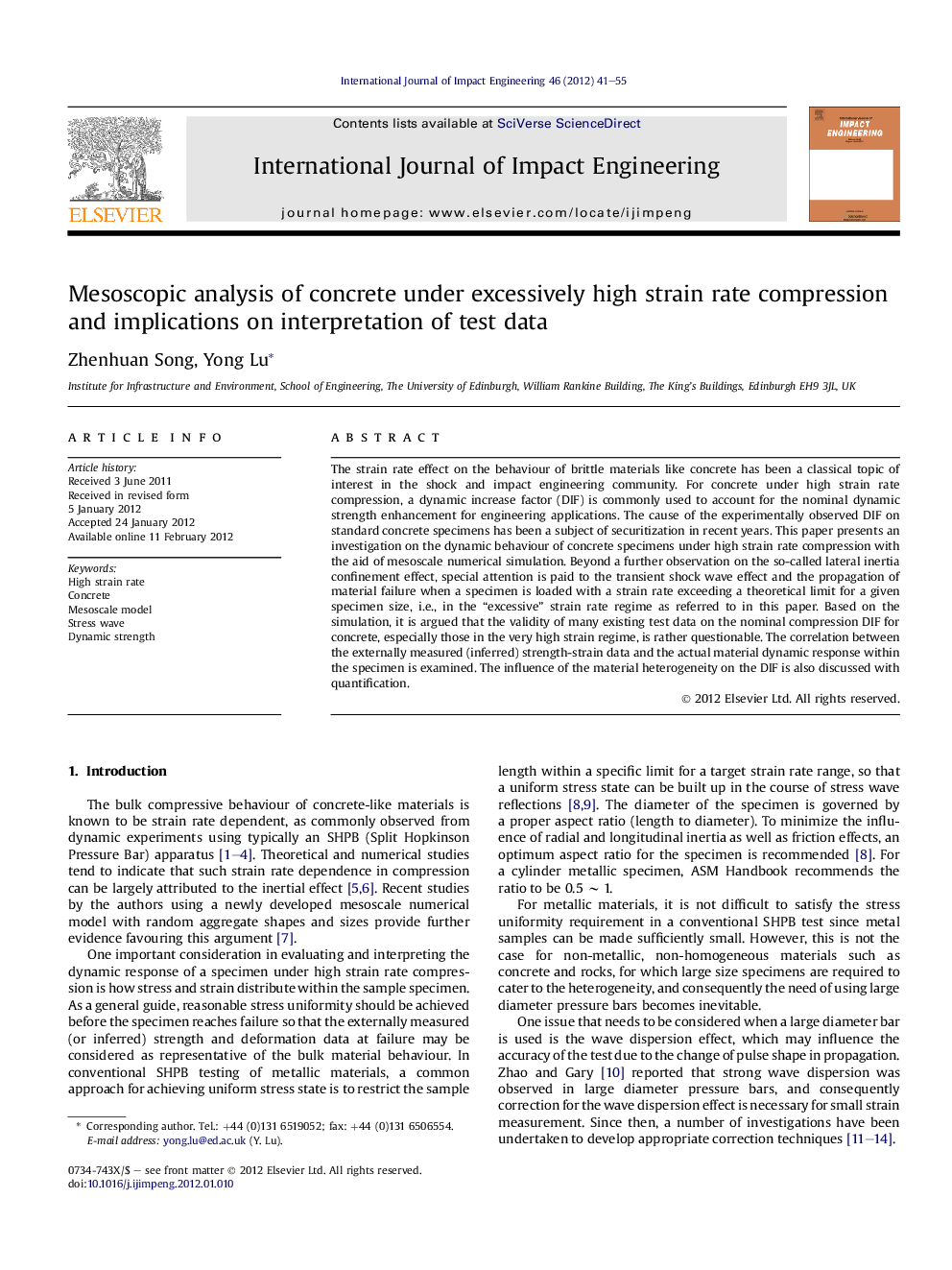| Article ID | Journal | Published Year | Pages | File Type |
|---|---|---|---|---|
| 776822 | International Journal of Impact Engineering | 2012 | 15 Pages |
The strain rate effect on the behaviour of brittle materials like concrete has been a classical topic of interest in the shock and impact engineering community. For concrete under high strain rate compression, a dynamic increase factor (DIF) is commonly used to account for the nominal dynamic strength enhancement for engineering applications. The cause of the experimentally observed DIF on standard concrete specimens has been a subject of securitization in recent years. This paper presents an investigation on the dynamic behaviour of concrete specimens under high strain rate compression with the aid of mesoscale numerical simulation. Beyond a further observation on the so-called lateral inertia confinement effect, special attention is paid to the transient shock wave effect and the propagation of material failure when a specimen is loaded with a strain rate exceeding a theoretical limit for a given specimen size, i.e., in the “excessive” strain rate regime as referred to in this paper. Based on the simulation, it is argued that the validity of many existing test data on the nominal compression DIF for concrete, especially those in the very high strain regime, is rather questionable. The correlation between the externally measured (inferred) strength-strain data and the actual material dynamic response within the specimen is examined. The influence of the material heterogeneity on the DIF is also discussed with quantification.
► Conflicting size requirements for high strain rate and bulk behaviour elaborated. ► Stress non-uniformity and propagating failure under high strain rates scrutinised. ► Correlation between external measurements and internal material behaviour discussed. ► Heterogeneity effect on dynamic strength enhancement examined with quantification.
